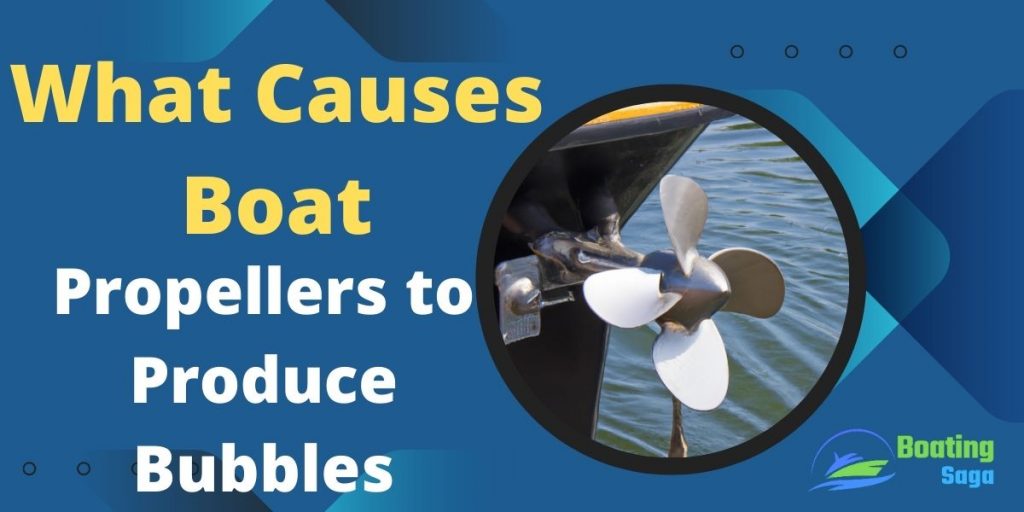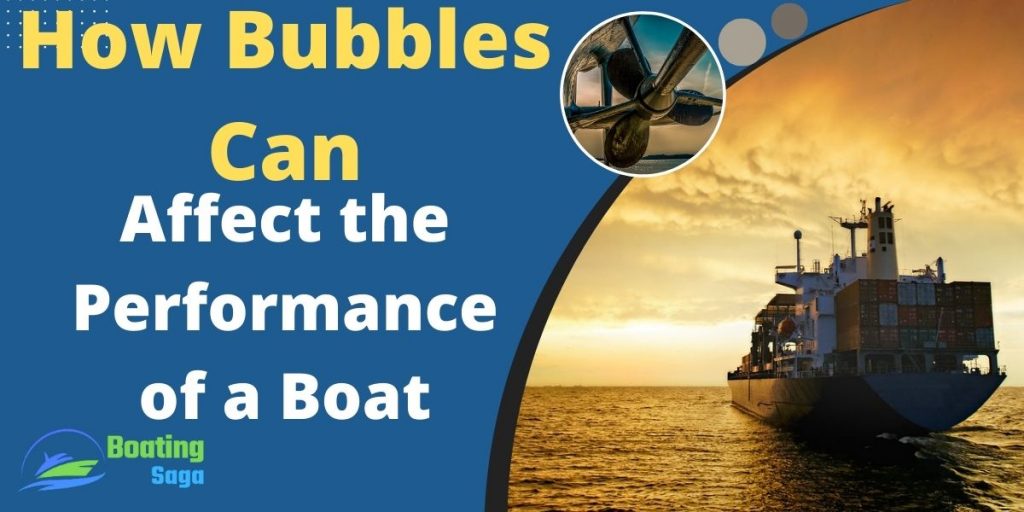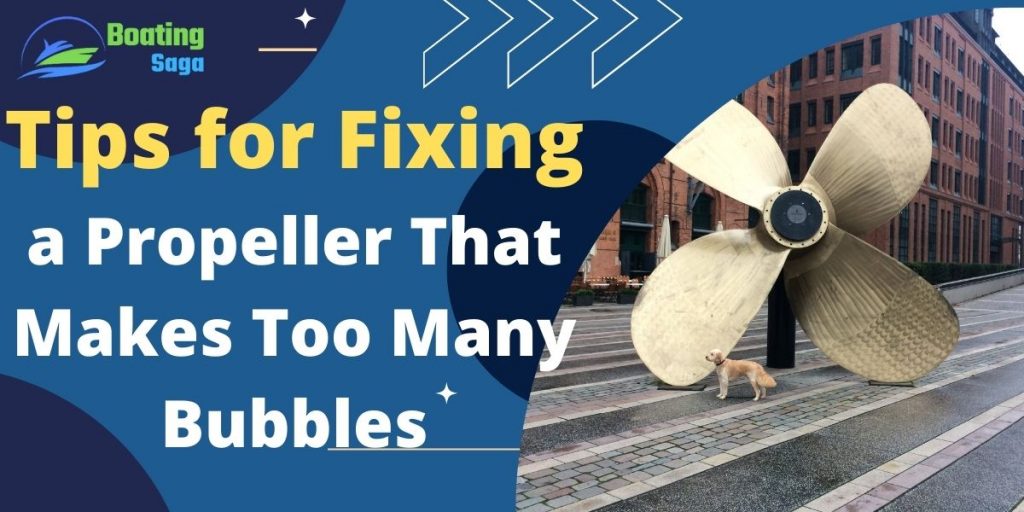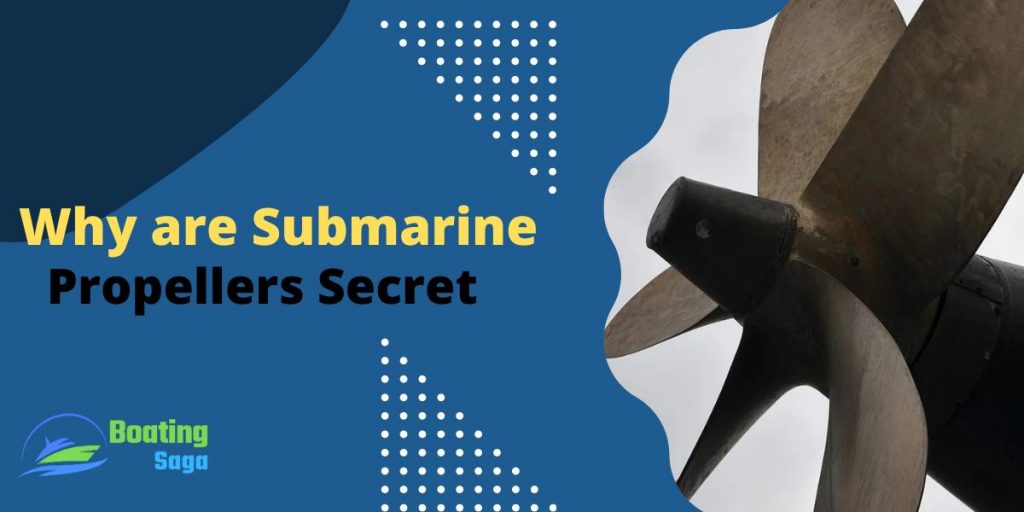
Boat propellers are one of the most common causes of bubbles in the water. There are two main reasons:
Why do boat propellers make bubbles?
The blades of the propeller churn up the water as they spin very fast. This action creates a lot of small air pockets that become trapped in the water. Another reason is because the engine of the boat produces exhaust gases that mix with the water which create bubbles.
The majority of the bubbles you see coming from a boat’s propeller are actually created by the engine, not the propeller itself. The engine emits exhaust gases that rise to the surface and mix with the water. This creates large bubbling areas behind the boat where you’ll often see fish swimming.
Bubbles can be annoying to some people, but they are actually good for the environment. They help oxygenate the water and support aquatic life.
Why Propellers Make Bubbles: the Science Behind It
Bubbles are often associated with fun and childhood memories. But have you ever wondered why propellers make bubbles?
As it turns out, there is a scientific explanation behind it. When a propeller moves through water, it creates a low-pressure zone in front of it and a high-pressure zone behind it. This pressure difference causes water to flow from the high-pressure area to the low-pressure area.
This flowing water creates a vortex, or whirlpool, behind the propeller. The vortex sucks air into it and traps it beneath the surface of the water. When the vortex eventually breaks through the surface of the water, it forms a bubble.
So next time you’re out on the lake enjoying the summer sun, remember that those playful bubbles were created by some serious science!
What Causes Boat Propellers to Produce Bubbles?

Boat propellers are often the source of bubbles in the water. There are several reasons why this happens.
- When the propeller is spinning, it creates a vacuum behind it. This causes water to be drawn into the propeller and then forced out again. The force of the water being expelled can create bubbles.
- When the propeller hits something in the water, it can create a shock wave that produces bubbles.
- Boat propellers can also produce bubbles simply from the friction of moving through the water.
- Lastly, reason why boat propellers produce bubbles is because of cavitation. Cavitation occurs when there is a change in pressure within the water that surrounds the propeller.
There are several factors that can contribute to how much bubbling occurs. One is the shape of the propeller blades. If the blades are little curved, they will create more bubbles than if they are straight. Another factor is how fast the boat is moving. The faster the boat moves, the more bubbles will be created.
How Bubbles Can Affect the Performance of a Boat

Bubbles can have a significant impact on the performance of a boat.
When bubbles form around the propeller, they create a drag force that can reduce the efficiency of the propeller by up to 25%. This can lead to reduced speed and increased fuel consumption.
Bubbles can also affect the handling of a boat. When bubbles form around the hull, they can cause the boat to lose contact with the water, making it more difficult to control.
Bubbles can have a profound effect on the performance of a propeller-driven boat. By vibrating the blades of the prop, they can create noise that can be heard above and below the waterline.
In extreme cases, bubbles can even cause a boat to capsize.
Bubbles Could be Beneficial for Boats
When a boat moves through the water, the propeller pushes against the water and creates a large number of small bubbles. These bubbles have several benefits for the boat.
The first benefit is that they improve lift. The bubbles act like tiny airfoils, lifting the hull of the boat out of the water and making it easier for the boat to plane or cruise at high speeds.
Bubbles can act as a lubricant for the boat’s propeller. When the propeller is spinning, the bubbles help to reduce friction and heat build-up. This can improve the efficiency of the engine and help to extend its life.
The bubbles also act as a cushion, absorbing some of the impact if the boat hits something in the water. This can protect both the hull and any passengers on board from damage.
Finally, bubbles can act as a visual marker for other boats in the area.
Tips for Fixing a Propeller That Makes Too Many Bubbles

A propeller that makes too many bubbles can be annoying and even dangerous. Here are some tips for fixing a propeller that makes too many bubbles:
-Check the blades of the propeller for damage. If the blades seem to slightly bent or damaged which can reduce boat’s performance, they will need to be replaced.
- Clean your propeller on a regular basis. You can do this by taking it out of the water and giving it a good scrub with a brush. Be sure to get rid of any algae or other growth that may be causing the problem.
-Make sure that the propeller is properly aligned with the shaft. If it is not, it will create more resistance and cause more bubbles.
-Check the size of the propeller. If it is too small, it will create more bubbles. You may need to replace it with a larger propeller.
- Check to make sure that the propeller is properly installed and tightened. If it is loose, tighten it according to the manufacturer’s instructions.
- Finally, If you still have a problem with too many bubbles, then you may need to replace the prop. You can get a new one from your local pool supply store or online. Be sure to measure the diameter of your current prop so that you get the correct size.
- You should also check the pitch of the propeller. The pitch is the angle of the blades relative to the centerline of the propeller shaft. If the pitch is too high, it will cause the prop to create more bubbles. To fix this, adjust the pitch of the prop so that it is lower.
You can also Read: Which is the superior pitch prop, 15 or 17 one?
Related and Frequently Asked Questions:
Why Boaters Love (and Some Hate) Propeller-made Bubbles?
For many boaters, propeller-made bubbles are part of the fun. They add excitement and a touch of danger to an otherwise calm activity. But not everyone is a fan. Some boaters find the bubbles annoying, disruptive, and even dangerous.
So what is it about propeller-made bubbles that some people love and others hate? One reason may be that they can interfere with visibility. When there are a lot of bubbles, it can be hard to see where you’re going. This can be especially dangerous when you’re near other boats or obstacles.
Another reason people may not like propeller-made bubbles is that they can make a lot of noise. The sound of the bubbles can be distracting or even overwhelming.
What is the Purpose of Air Lubrication on Ships?
The purpose of air lubrication on ships is to reduce the frictional resistance between the ship’s hull and the water. This is accomplished by injecting air into the water through small holes in the bottom of the hull. The air bubbles create a cushion of air that reduces friction and drag on the ship.
The main purpose of air lubrication is to reduce fuel consumption. By reducing friction, the ship requires less power to move through the water, which means that less fuel is needed.
Air lubrication has been shown to reduce fuel consumption by up to 10-15%, which can result in significant savings for shipping companies. In addition, air lubrication can extend the life of a ship’s hull by reducing wear and tear. Air lubrication is an important and relatively new technology for making ships more efficient and sustainable.
Air Lubrication: Good or Bad?
Let’s take a look at the pros and cons of air lubrication.
Air Lubrication reduces wear and tear on surfaces, fuel consumption and noise levels. On the downside, however, some argue that air lubrication can actually increase wear on propellers by trapping dirt and debris in the pores of the metal including the potential for leaks and the need for maintenance.
Overall, air lubrication is a good way to reduce friction and wear on surfaces. However, it is important to make sure that the system is properly maintained in order to avoid leaks and other problems.
Are Bubbles Are Good for Marine or Aquatic Life?
Bubbles provide oxygen to underwater creatures, which is essential for their survival. In addition, bubbles can help remove carbon dioxide and other harmful gases from the water.
Not only do bubbles benefit marine life, but they can also be used to clean up oil spills and other environmental disasters. Bubbles can absorb oil and pollutants, making them less harmful to the environment.
So next time you see a bubble, don’t just pop it - think about all the good it could be doing for the world around us.
Conclusion
I am really sure about that you have already got the answer, why do boat propellers make bubbles?
Boat propellers make bubbles because they are churning up the water as they move. The bubbles are created by the air that is being forced through the water. The amount of bubbles that are created depends on the speed of the propeller and the size of the boat.


